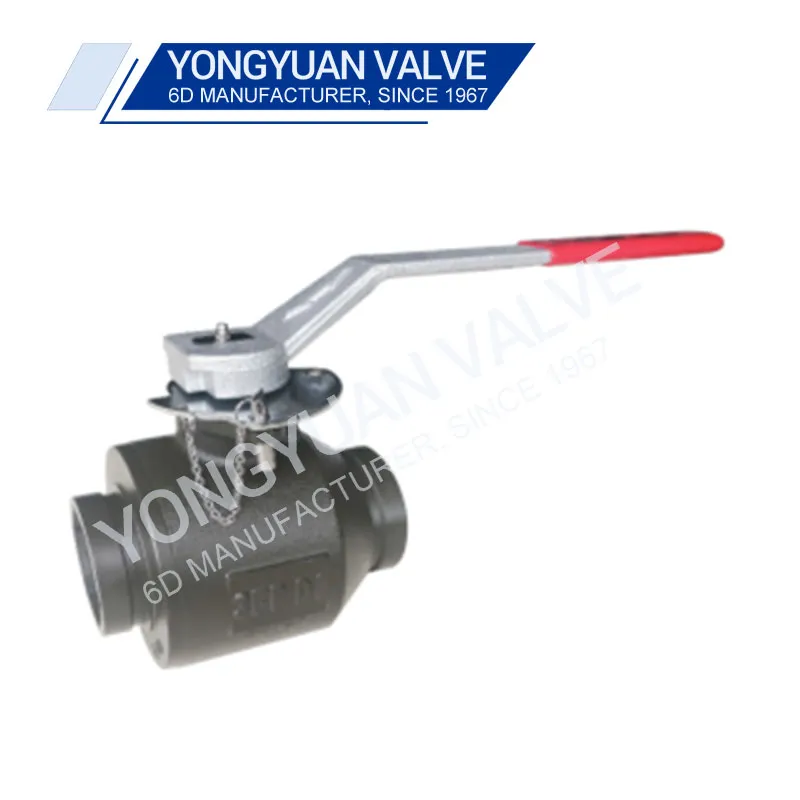Characteristics of 4 inch Steam Ball
2024-07-28
A 4-inch steam ball is a type of valve used in steam systems to control the flow of steam. These are generally employed in various industrial and commercial applications where precise control of steam flow is necessary. Here are the key characteristics of a 4-inch steam ball:
1. Size and Dimensions
- Diameter: The ball valve has a nominal diameter of 4 inches, which refers to the size of the valve opening. The actual external dimensions of the valve will be larger due to the valve body and other components.
- Compact Design: Despite its diameter, the valve is designed to fit within a standard pipeline or system layout.
2. Ball Valve Mechanism
- Ball Design: Features a spherical ball with a hole or port through the center. The ball rotates to control the flow of steam through the valve.
- Quarter-Turn Operation: The valve operates with a quarter-turn handle or actuator, which rotates the ball to open or close the valve.
3. Material and Construction
- High-Temperature Materials: Constructed from materials that can withstand high temperatures and pressures typical of steam applications. Common materials include stainless steel, brass, or carbon steel with heat-resistant coatings.
- Sealing: Equipped with high-quality seals and gaskets to prevent steam leakage and ensure a tight seal. The seals are typically made from materials like PTFE (Teflon) or other heat-resistant elastomers.
4. Pressure Rating
- Pressure Capacity: Designed to handle high-pressure steam systems. The pressure rating depends on the material and construction of the valve, typically rated to withstand pressures up to several thousand PSI (pounds per square inch).
- Temperature Range: Capable of operating within a specific temperature range, often up to several hundred degrees Fahrenheit or Celsius, depending on the material.
5. Control and Operation
- Manual or Automated: Can be operated manually using a hand lever or automated with an electric, pneumatic, or hydraulic actuator for remote control and automation.
- Flow Control: Provides precise control over the flow rate of steam by adjusting the ball's position within the valve.
6. Connection Types
- Flanged Ends: Commonly equipped with flanged connections for easy installation and removal from the pipeline. Flanges are typically standardized to match industry specifications.
- Threaded Ends: Some models may feature threaded connections for different types of installations.
7. Safety Features
- Pressure Relief: May include built-in pressure relief features or be part of a system with pressure relief valves to handle overpressure situations.
- Locking Mechanism: Some valves include a locking mechanism to prevent accidental operation or tampering.
8. Maintenance and Durability
- Low Maintenance: Designed for low maintenance with durable materials and robust construction that can handle the stresses of steam systems.
- Ease of Maintenance: Features like replaceable seals or gaskets allow for straightforward maintenance and repair.
9. Application
- Industrial Use: Commonly used in industrial applications such as power plants, manufacturing facilities, and process industries where steam is used for heating or powering machinery.
- Steam Systems: Ideal for controlling steam flow in high-temperature and high-pressure steam systems.
10. Certifications and Standards
- Industry Standards: Typically complies with industry standards and certifications such as ASME (American Society of Mechanical Engineers) or API (American Petroleum Institute) for quality and performance.
- Testing: Subjected to rigorous testing to ensure it meets performance and safety requirements for steam applications.
11. Environmental Considerations
- Thermal Shock Resistance: Designed to withstand thermal shock from sudden changes in temperature and pressure.
- Corrosion Resistance: Constructed to resist corrosion from steam and potentially corrosive substances within the steam system.
Summary
A 4-inch steam ball valve is a robust and precise component used to control the flow of steam in industrial and commercial steam systems. With its high-temperature and pressure capabilities, durable construction, and reliable operation, it is suitable for demanding applications. The valve's design includes a spherical ball for flow control, high-quality materials, and safety features to ensure efficient and safe steam management.



